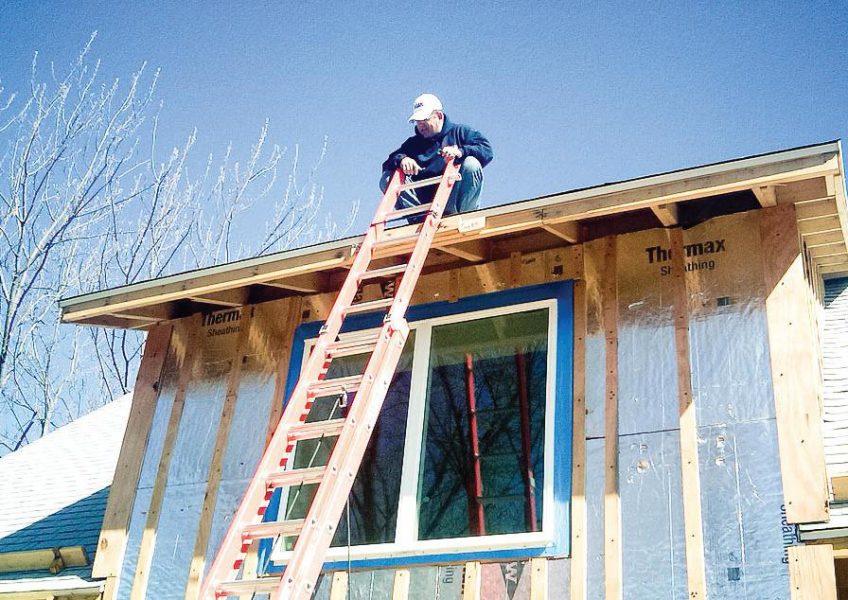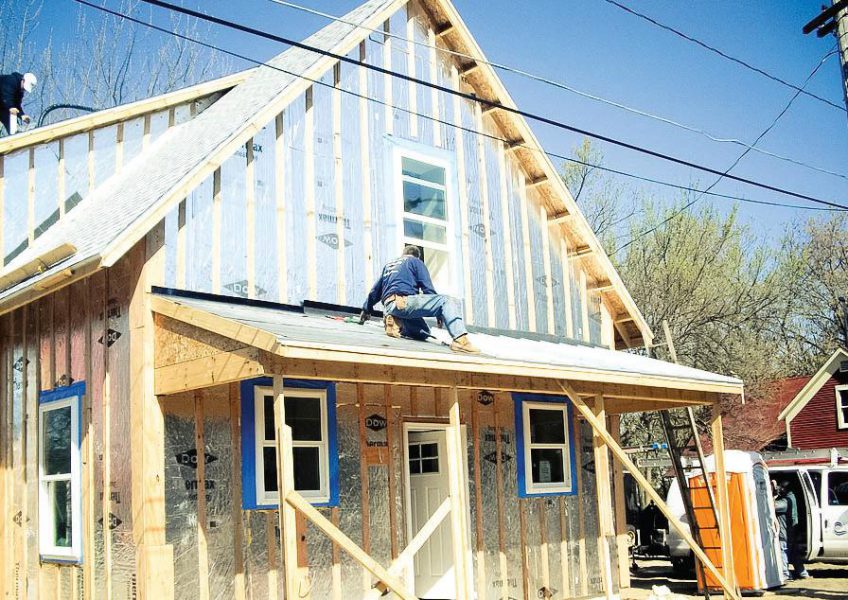Sustainability is the capacity to endure. Sustainability embodies stewardship and design with nature. Historic preservation is an endeavor that seeks to conserve and protect buildings, objects, landscapes or other artifacts of historic significance. According to the National Trust for Historic Preservation, historic preservation can – and should – be an important component of any effort to promote sustainable development. The conservation and improvement of our existing built resources, including re-use of historic and older buildings, greening the existing building stock, and reinvestment in older and historic communities, is crucial to combating climate change.
Wege Center for Sustainable Design
When the restored old Federal Building opens in 2012, Kendall College of Art & Design will have finalized its sustainability plan, the cornerstone of which will be the Wege Center for Sustainable Design, made possible by a $1 million gift from philanthropist Peter Wege. That plan calls for an integrated, whole-systems approach to sustainability in art and design education, a wholly revamped look at how the college approaches preparing future leaders.
“Over the past year or so, the college has been evaluating and revising its processes and practices relative to sustainability, engaging in an evaluation of its current practices and the potential for enhancing those practices,” said Kendall President Oliver Evans. “The decision to establish a Center for Sustainable Design in the Federal Building has provided a further opportunity to build upon the work. Within an institution dedicated to art and design, a commitment to sustainability must be a part of the academic programs, but its presence in those programs must reflect the college’s entire commitment to sustainability.”
Furniture Design Chair Gayle DeBruyn has helped shepherd the college through the evaluative process on how sustainability fits within the organization. “ It’s a process that started first in the classroom and required buy-in from the students before spreading throughout the organization. The students have pushed Kendall to consider becoming a climate-neutral campus, helped establish baseline metrics for a greenhouse gas inventory from 2009 to 2010, and piloted a test run of Recycle Mania,” DeBruyn said. Because of their efforts, Evans will also sign the American College & University Presidents’ Climate Commitment.
“Oliver has been encouraging me to bring this into the classroom at a student level. It was really quite strategic. We’ve been graciously welcomed to the collegiate community to look at how we might move forward and at our core competencies – the things we bring to the region that are unique in design and fine art – and how we can strengthen what has been done from a collegiate, government and business level,” DeBruyn said.
Ferris State University President David Eisler said, “I can’t see a future for Kendall offering design degrees without sustainability built into it.” Moreover, he said he could envision no better embodiment of Kendall’s sustainability aspirations than to renovate and reuse the historic Federal Building.
Kendall will house the Wege Center for Sustainable Design on the fourth floor of the Federal Building, along with the largest Material ConneXion® collection in the state. While plans are still in development, the center will likely feature collaborative space for interdisciplinary design education and hands-on learning, Eisler said.
“Design has been in Kendall’s DNA from day one. It’s always been a part of what Kendall does,” Eisler said. “When you think of the transitions in the Michigan economy, so much of the furniture is no longer manufactured here, but the design skills remain. … That’s where the field is moving. The intent behind the Wege Center for Sustainable Design is to bring sustainability as a core organizing concept for Kendall’s work in the design field.”
Historic Preservation Minor: Everything Old is New Again
If you believe that historic preservation is little more than keeping old buildings from being torn down, Adjunct Professor Jennifer Metz will set you straight. Metz teaches the classes needed to achieve a minor in Historic Preservation. Introduced to Kendall just seven years ago, the topic has become a favorite of interior design and art history majors.
Yes, it does involve visits to really old and not-so-old buildings – and a lot more. According to Metz, historic preservation seeks to preserve, conserve and protect buildings, objects, landscapes or other artifacts of historic significance. “Preserving national historic landmarks – such as Mount Vernon, George Washington’s home – has been taking place on a national level, but it wasn’t until the devastation of our historic resources during the ‘urban renewal’ of the 1960s that people began to realize the importance of saving more common historic buildings,” she says.
Three classes toward the minor specifically address historic preservation: Introduction to Historic Preservation, Historic Preservation History and Theory, and Historic Preservation Theory and Practice. Throughout the program, students learn how to evaluate buildings and styles; how to conduct archival research into a building’s history; and what makes a building, area, neighborhood or district worthy of preservation. “Age, integrity, architectural type, rarity, and association with certain building trends or historic figures are just some of the criteria,” explains Metz.
Knowledge of a building’s history makes a huge difference when someone is deciding how to renovate a building, which, in this economy, more developers are doing instead of building new.
Jennifer Metz, Adjunct Professor
Kendall College of Art and Design
Metz is most often asked what one does with a minor in Historic Preservation. “It teaches anyone analytical thought and archival research techniques, and it gives interior designers an edge,” she explains. “Knowledge of a building’s history makes a huge difference when someone is deciding how to renovate a building, which, in this economy, more developers are doing instead of building new. Designers are armed with historically accurate information instead of conjecture and guessing.”
Combining historic preservation with sustainability knowledge elevates an interior designer above his or her peers. “After all,” says Metz, “the highest form of green design is reusing an existing building. Unfortunately, people believe that a historic preservation commission sets down rules that tell owners what they can and cannot do, and makes it expensive to renovate or update their home or business. Commissions gladly work with owners to find workable solutions that will maintain the visual integrity of a building. And there are usually great tax incentives that can help offset the costs. The Federal Building is a perfect example of the value of historic preservation. It’s a wonderful space with a high degree of historic integrity, and it’s being remodeled as a ‘green’ building. It’s a great example of history meets sustainability. And ultimately, that’s what historic preservation is all about.”
A Brush With Kindness Combining Preservation and Sustainability
Gabrielle Fahlen’s passion for sustainability is palpable. Just discussing the subject makes her eyes light up. The only thing Fahlen (known as “Gabe” to friends) is more passionate about is her devotion to affordable housing and Habitat for Humanity.
Habitat for Humanity International is an ecumenical Christian ministry dedicated to the cause of eliminating poverty housing. Since its founding in 1976, Habitat volunteers have built, rehabilitated, repaired or improved more than 400,000 houses worldwide, providing simple, decent and affordable shelter for more than 2 million people.
Last semester in her Collaborative Design class, Fahlen’s project involved designing a Habitat for Humanity home that could sustain itself “off the grid.” Such homes do not rely on the municipal water supply, sewer, natural gas, the electric power grid or similar utility services. “Habitat is buildinghomes in Grand Rapids with 12-to-16-inch block walls, solar heating and cooling, and radiant heat. It is possible to have an affordable, energy-efficient home,” she explains. “In fact, the home is now returning 2 percent of the energy used back to the grid.”
An Interior Design senior, Fahlen believes, “Everyone deserves a home that not only functions well but looks good too.” So after her Collaborative Design class ended, she began volunteering with Habitat for Humanity’s A Brush with Kindness program, an exterior home preservation service designed to revitalize the appearance of neighborhoods, encourage connections within the community and, most importantly, help preserve affordable housing stock. A Brush with Kindness ensures that families live in safe and well maintained homes by offering painting, landscaping, weather stripping and minor repair services for homeowners in need.
Fahlen has been volunteering with A Brush with Kindness in the Wealthy Heights section of Grand Rapids, located west of Eastown. She has been working with a professional designer to create exterior color palettes for each new or renovated home, using whatever materials have been donated. “So often, a Habitat home sticks out in a neighborhood because it is bland in appearance,” she explains.
“ Everyone deserves good design, and when the exterior of one home is spruced up, soon others in the neighborhood begin to take more pride in their homes.”





Leave a Reply